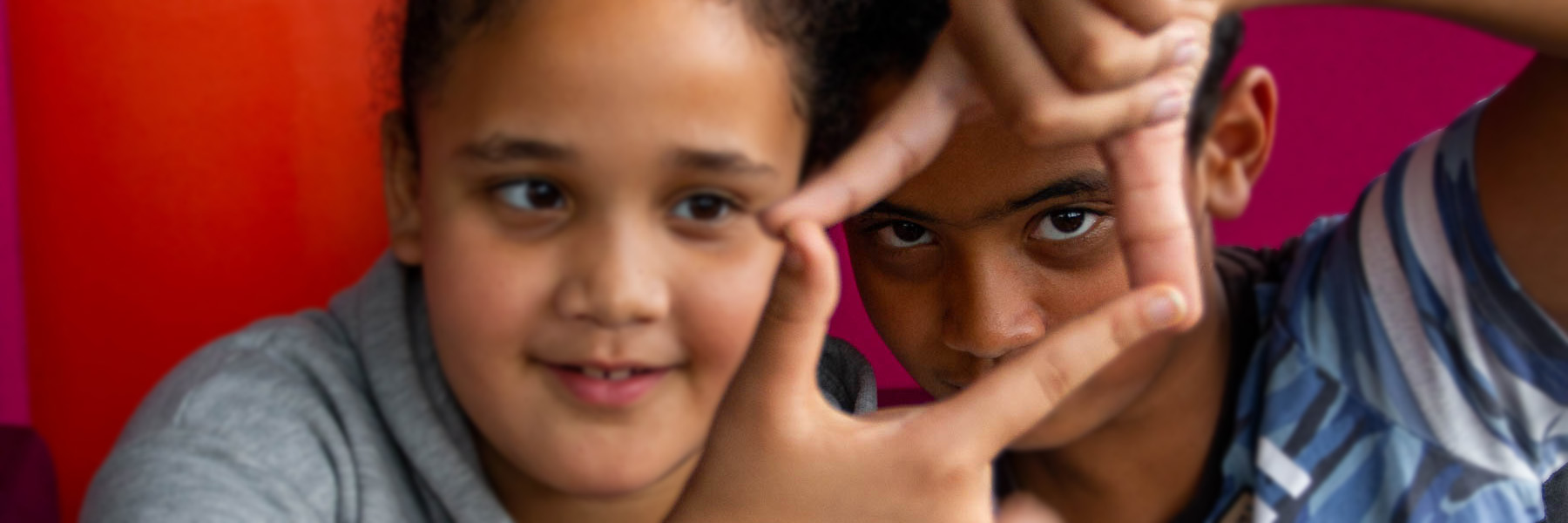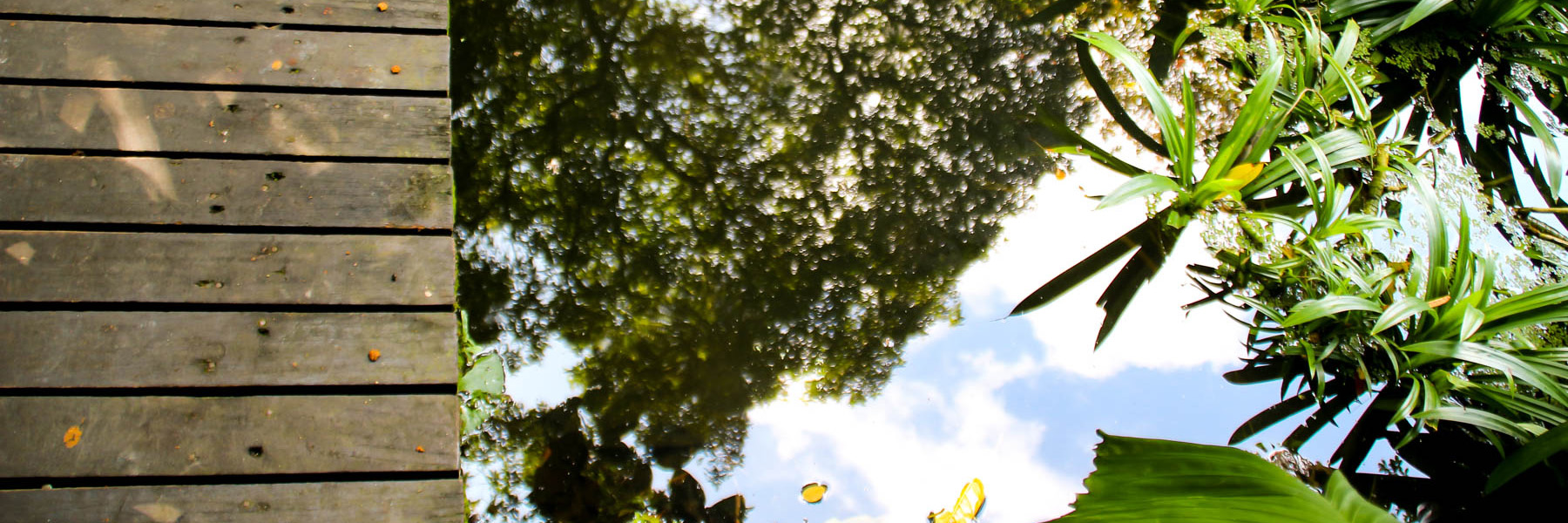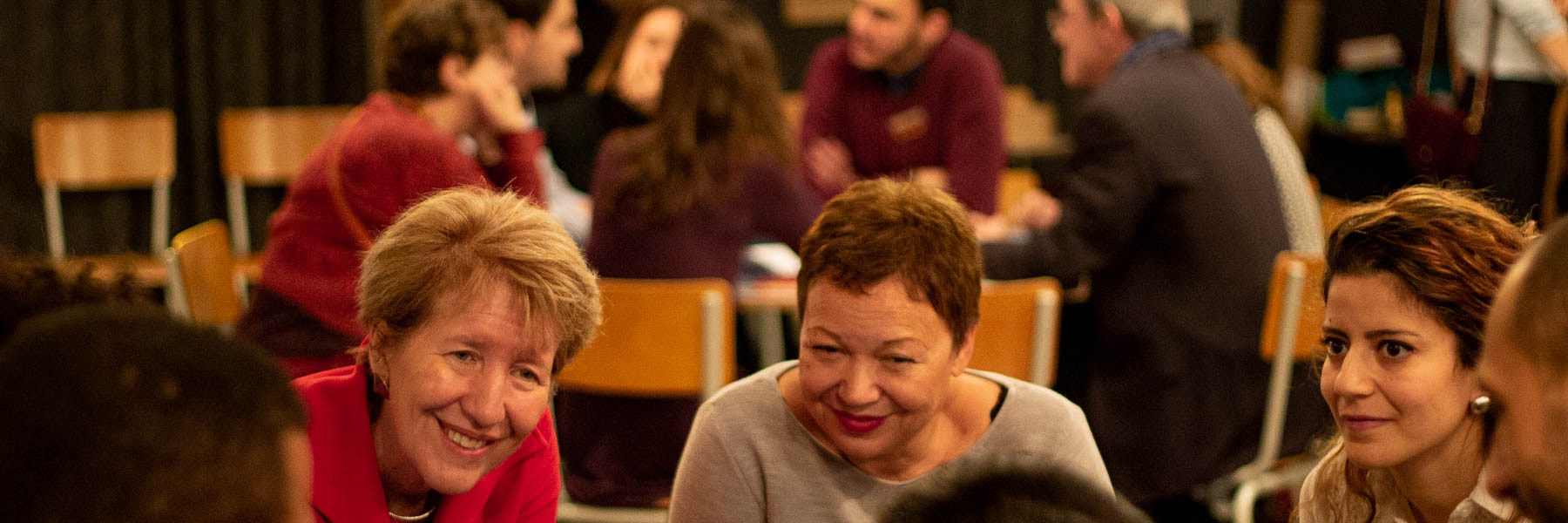
By Charlotte Hochman. Photography and graphics: Michele Caleffi | Reading Time: 7 minutes
It may sound like a paradox, but physical distancing makes the tribes you’re a part of much more visible. Who has shown up for you in the last months?
Who provides you with moral support by checking in, or proposes informal moments to reconnect with peers? Who’s offering moments for self-reflection or inspiration, or offering stability by giving you access to new knowledge such as data and frameworks to interpret your changing reality?
They may take the form of virtual happy hours, webinars, hang-outs, mastermind groups, learning journeys, social events, or wear yet other clothes and original names. Most of these you take part in, others you may lead, or dream of doing so one day. These are your spaces at present, places where you can be found.
Things happen when people get together. They talk, compare notes, laugh, build trust, make decisions, influence each other, inspire each other to reflection and action. A space is like any party: it’s a result of who shows up.

So who’s in these spaces, influencing each other? Let’s call them tribes: people who have enough in common to decide to free their precious time to be present to each other in some way. What defines these tribes? Not geography anymore. The language and cultural codes? Habit, ease of access? Vibe? Shared goal or interest? A sense of safety?
You have chosen your tribes until now, perhaps without much thought about the choosing, from perspectives like your profession, education, or interests. Right now, those tribes may be silos – systems that don’t connect with each other. But consider now you have tremendous power in linking those tribes, to accelerate evolution and bring about needed conversations.

Why connect your tribes with one another? Here are some of the reasons:
- Because on a personal level, homogeneity is boring. Fun and growth lie in surprise… but funnily enough, we always risk recreating uniformity.
- Because there is an unsuspected return on investment, or return on effort, in linking tribes, as they have complementary resources. Different things come easily to different people, and this can achieve miracles just when you need one.
- Because otherwise, we’ll recreate the same problems that got us here, in this moment of utter stress to the system. “The thinking that got us to where we are is not the thinking that will get us to where we want to be”, in Einstein’s words. We need new points of view to create new solutions.

We can all, at our own level, contribute to enlarging circles of trust by bringing new people to the tables we’re at. Trust is contagious, as is the feeling of belonging: we can pass it on one person at a time, and through it transform entire systems, just by the people we let in. Trust is a secret sauce to provoke change.
And now, during the COVID-19 disruption and in its aftermath, is the perfect opportunity to extend, connect and redefine our tribes. These strange times actually offer the conditions for a perfect storm to create new spaces that are inclusive. Why?
- Because many experiments are being led: there is an abundance of new events and new spaces as communities make up new tools for themselves.
- Because people are already out of their comfort zone, confused. Our sense of belonging is a little blurred: it’s a great moment to use the blurring of the lines to redefine the pattern.
- Because this is a moment of accelerated learning for organizations: they are more open to feedback as they look for ways to evolve. A perfect moment for input to the systems you’re a part of.
So how can you, in practice, extend and connect your tribes, to make sure the tables – and conversations they are a context for – remain generative in the long run?
#1 Be intentional in mapping your tribes

Take a moment to think of the spaces you take part in at the moment, and draw them as circles, each on a small piece of paper. Who’s in each of these spaces? Place the tribes that have a lot in common physically close to each other, and place the others further apart. Move them around until it feels true. What patterns do the circles form? Look at where your circles intersect. Do you notice any gaps between them? Use the ways in which communities (the circles) are rubbing against each other as leverage points to know how to extend the circles organically.
You can use the same method if you are hosting online spaces, symbolising the type of people who are in your space. Who’s there, and who’s missing? (If you’re not familiar with thinking about how people might complement each other in practice, or to think about diversity in a technical way, this piece can help).
Be intentional in changing the pattern. Each circle hosts conversations. Make sure you include new points of view in the conversations by drawing two circles that are apart closer to each other until they collide (connecting your tribes); or by creating new bits of paper with circles that are currently not on your map (extending your tribes).
#2 If you don’t see a bridge, YOU are the bridge

Would any of the people in one tribe benefit from taking part in another space of which you’re a part? If that’s the case, the value is very likely mutual: it means their point of view is not yet very present, and the conversation could only get richer at that table if it were.
Build that link proactively: extend an invitation, send a link, mention it in a conversation and see if the bait works. You are the link you’re looking for between worlds. This is your unique power: only you know the worlds you are a part of, only you can map them in a meaningful way, and only you can connect them organically, simply by being who you are– and accepting to be the bridge you want to see between them.
Be abundant and proactive in your invitations, and follow them up if necessary, until there is some movement in practice. This is not a one-shot.
#3 Make the table a comfortable one for different voices

Cover your basics: language and pace
I’m constantly amazed by how language and pacing are taken for granted in most spaces. Let’s – make – sure – people – understand – and – are – comfortable! Inclusivity starts with making it easy to join even if people think in another language, or are not used to the format. As host, make sure you lead the experience with these constraints in mind. As a participant, signal to the host if you feel they’re going too fast for everyone to feel at home. Things will get better over time as we become collectively better at this.
Be aware of the cultural references offered
As host, check your illustrations, metaphors, examples to make them fit to different ways of seeing the world. If you’re offering fast food at the dinner table you’re convening, that’s great: just be aware that’s it’s a North American reference and not everyone might be used to digesting it, or know whether it’s polite to pick it up with their hands. Lastly: it may not even be dinner time where some people log in from! Please don’t water down who you are or where you are from, they are both beautiful. But do make sure you are conscious of how that might resonate with the others around the table. You don’t want to be making the point that you are the norm -especially as host – and that others are an exception to it. That will not bring the quality of sharing for which you are creating your space.
As a participant, you can counterbalance the references the host is offering by your own, in breakout rooms for instance, or in the chat function of the videoconferencing tool. This input is really precious to hosts as they learn to do this better.
* * *
Extending our tribes is not about changing who we are, but about using the proximity that we can have at the moment with people who are “far” from us to build bridges that will outlive the crisis. The river may dry up, but the bridges will remain.
We all have our own tribes, whether we inherited them or let them form naturally around us through the episodes of our own story so far. Let’s not be merely a result of our tribes. Let’s make the tribes the result of each of us.
Charlotte Hochman is the Executive Director of Wow!Labs, accelerating innovation for companies, cities and universities in emergent situations. She has founded incubators and designed curriculums for leading institutions. Charlotte is a Fulbright scholar, an Entrepreneur-in-Residence at INSEAD, Designer-in-Residence at CCA in San Francisco, a BMW Foundation Responsible Leader, and a panelist at Obama’s Presidential Summit. Discover her work and access her guide "People spaces: How to create, convene and take part meaningfully in new spaces online”.
Comments
3 Comments
Trackbacks/Pingbacks
- How to create people spaces online that breathe and thrive | Wow!Labs Innovation Studio - […] is a definite leap forward in how relationships – and organizations- evolve. It is also an opportunity for tribes…
- How to be your full YOU in online events and leave your mark | Wow!Labs Innovation Studio - […] is a definite leap forward in how relationships – and organizations- evolve. It is also an opportunity for tribes…
- Leader in a Diverse Workspace? Here's How to Be More Equitable - […] of culture that are not relative to geographic origins. These include invisible subcultures, or groups of interest that people…



Beautiful abstract ideas gradually made real and more concrete.
Love to read more of such wonderful style of writing.
Good job
Thank you Doris, much appreciated. Here are a couple of other articles on related topics :
https://www.wow-labs.com/create-facilitate-spaces-online
and
https://www.wow-labs.com/building-innovative-teams
Posting on multiple platforms as usual to gather our own diverse tribes… Here are some of your responses. Keep them coming!
Thank you for your fascinating work, much needed. M. H.
Well, what a delight to see your writing… Your work looks amazing… T.S
OMG, Belonging is exactly the theme we’ve explored throughout June! Can’t wait to read this! O.S.
So glad to see you’re keeping up the uniqueness of your work. Don’t lower your arms, let’s go full-speed- you’re needed. B.S.